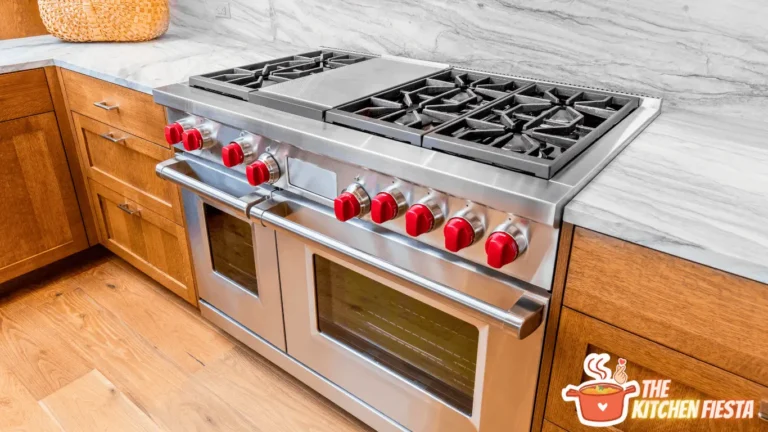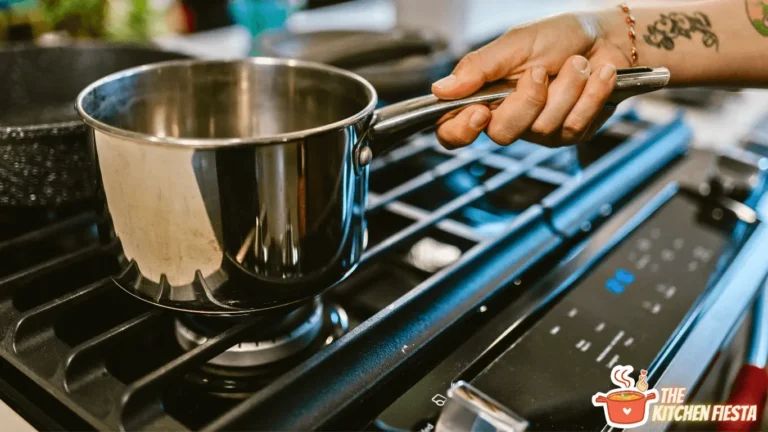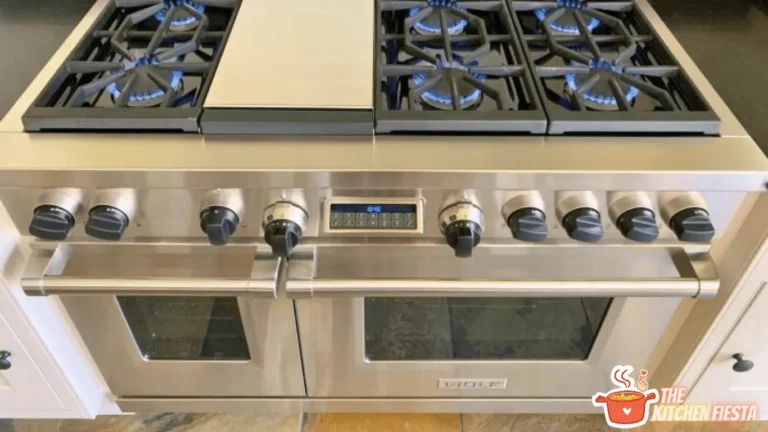what number is simmer on a gas stove?
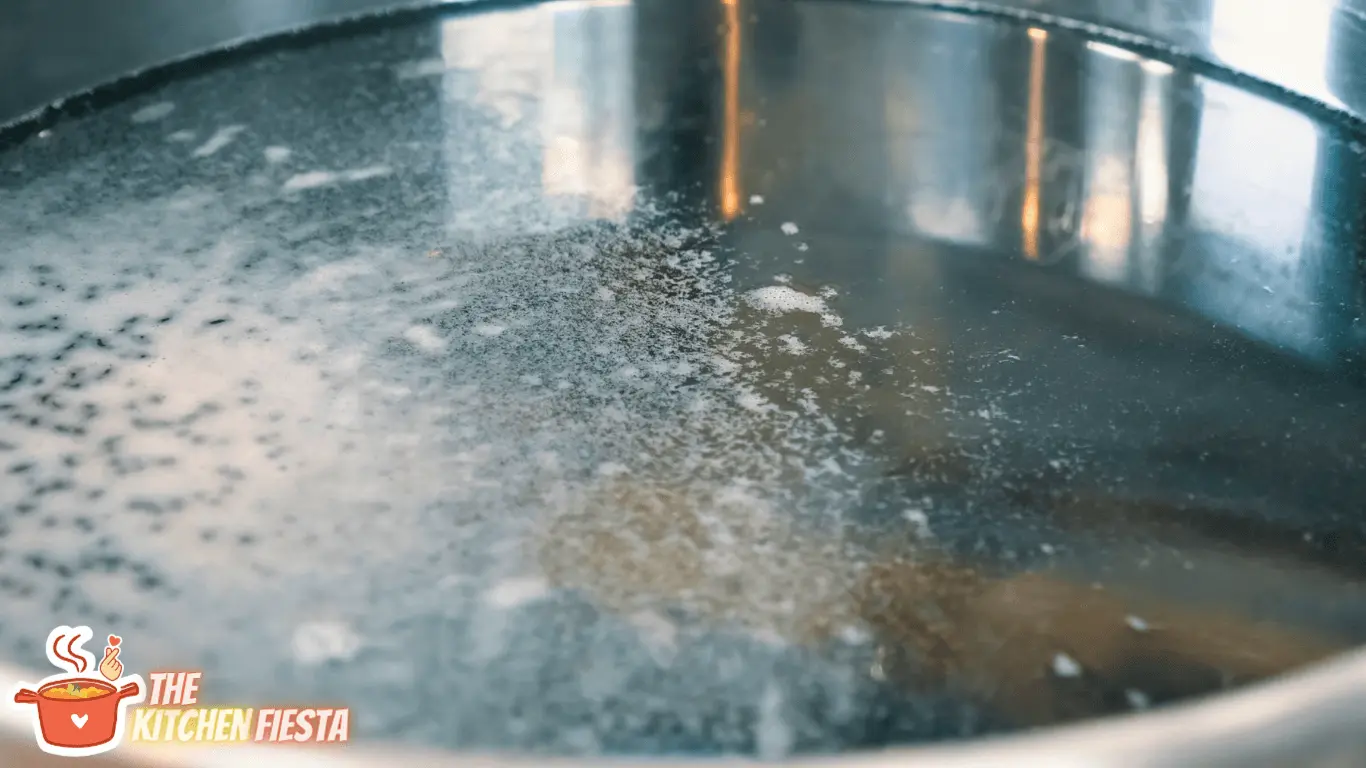
Achieving the perfect temperature is crucial to ensure that your food is cooked properly. One of the most important temperature ranges in cooking is the simmer. Simmering is a technique where the liquid is heated to a temperature just below boiling point, allowing small bubbles to form on the surface of the liquid. This technique is commonly used for soups, stews, sauces and other dishes that must be cooked slowly and gently.
On a gas stove, simmer is usually around numbers 2 to 4. The actual act of simmering means bringing liquids to a state close to boiling but not really. Simmering is more gentle than bubbling. Therefore, you must decrease the heat until the flame is low and stable to achieve a gentle simmer. This usually corresponds to the range of heat setting 2 to 4. Different gas stoves may have slightly different heat ranges and simmer settings, so you may need to adjust the heat accordingly based on your stove.
Understanding Gas Stoves
Gas stoves are a common kitchen appliance used for cooking food. They work by burning natural gas or propane to produce heat.
Parts of a Gas Stove
A gas stove comprises several parts that work together to produce heat. These parts include:
- Burners: These are the circular metal components on the top of the stove that produce the flame. The number of burners on a gas stove can vary depending on the model.
- Control Knobs: These are the knobs on the front of the stove that control the amount of gas flowing to the burners. They also control the temperature of the flame.
- Igniter: This component produces the spark needed to light the flame.
- Oven: This is the enclosed compartment below the burners used for baking and broiling.
- Broiler: This is a separate compartment located at the top of the oven used for broiling.
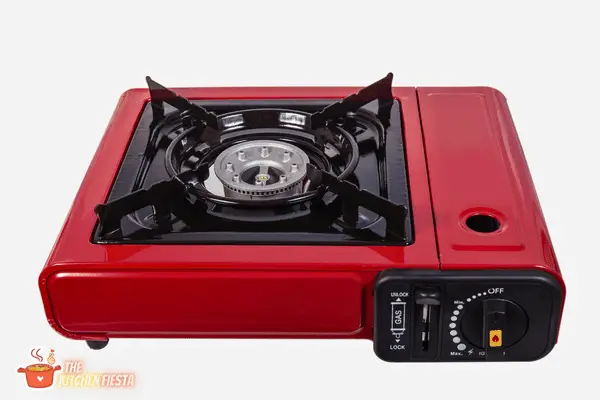
How Gas Stoves Work?
When you turn on the control knob, gas flows through a valve and into the burner. The igniter produces a spark that ignites the gas, producing a flame. The size of the flame is controlled by the amount of gas flowing into the burner. The control knob allows you to increase or decrease the gas flow to the burner, which controls the flame’s size.
Lower the flame to a low heat setting to simmer on a gas stove. The number on the control knob corresponding to a simmer can vary depending on the stove model. Generally, a simmer is achieved when the water is just barely bubbling. This low heat level ensures that your food doesn’t overcook or burn.
Why Simmer on a Gas Stove?
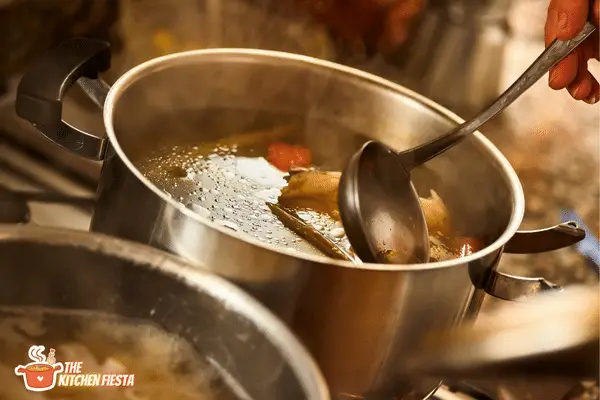
Simmering on a gas stove is important because it allows food to cook evenly and prevents it from burning. Gas stoves provide a consistent heat source, which makes it easier to maintain a low temperature for simmering. Gas stoves also offer more control over the heat source, allowing precise temperature adjustments.
What Number is Simmer on a Gas Stove?
The number for simmering on a gas stove varies depending on the stove. Generally, simmering on a gas stove is between numbers 2 and 4. However, it is important to note that the numbers on the stove dial may not correspond to the actual heat output. It is best to adjust the heat gradually and monitor the food to ensure it is simmering at the desired temperature.
Adjusting the Flame
When cooking on a gas stove, it’s important to know how to adjust the flame to achieve the desired temperature. Simmering is a common cooking technique that requires a low flame. But what number is simmered on a gas stove? Let’s find out.
How to Adjust the Flame on a Gas Stove
To adjust the flame on a gas stove:
- Start by turning on all the surface burners, then turn the burner low.
- Remove the knob and insert a screwdriver into the valve shaft.
- Turn the screwdriver to adjust the flame.
- Once you have achieved the desired flame, put the knob back on.
It’s that simple.
Tips for Adjusting the Flame
Here are some tips for adjusting the flame on a gas stove:
- Look at the flame: If the flame on the gas stove is low and steady, the stove is likely simmering. The flame should be blue and small, indicating low heat.
- Listen for a hissing sound: Simmering stoves often produce a gentle hissing sound as the gas is released at low pressure.
- Experiment with different settings: Every gas stove is different. Experiment with different settings to find the perfect simmer for your stove.
- Use a simmer plate: If you’re having trouble achieving a low flame on your gas stove, consider using a simmer plate. A simmer plate is a metal plate that sits on top of the burner and helps to distribute the heat evenly.
Safety Precautions
When using a gas stove, it is important to take certain safety precautions to ensure you and your loved ones are safe from harm.
Gas Stove Safety Tips
Here are some of the gas stove safety tips that you should follow:
- Ensure your gas stove is installed properly and under the manufacturer’s instructions.
- Keep the area around your gas stove clean and free from clutter. This will help to prevent any accidental fires.
- Never leave your gas stove unattended when it is in use. If you need to leave the room, turn off the stove.
- Use the correct size pots and pans for your burners. Using pots and pans that are too small or too large can lead to accidents.
- Keep flammable materials away from your gas stove such as paper and dish towels.
What to Do in Case of Gas Leaks
Gas leaks can be very dangerous. You should immediately act if you suspect a gas leak in your home. Here’s what you should do:
- Turn off your gas stove and any other gas appliances in your home.
- Open all of the windows and doors in your home to let fresh air in.
- Do not use any electrical appliances or turn on any lights, as this can create a spark that could ignite the gas.
- Evacuate your home immediately and call your gas company or the fire department from a safe location.
Remember that gas leaks can be very dangerous and should be taken seriously. By following these safety tips and knowing what to do in case of a gas leak, you can help to keep yourself and your loved ones safe.
Article Summary
Knowing how to simmer is an essential skill. Simmering is a cooking technique that involves cooking food in liquid at a temperature just below boiling point. It’s a gentle cooking method that helps to infuse flavors and tenderize meats.
But what number is simmered on a gas stove? The truth is, there is no universal answer. The number on the control knob of a gas stove can vary from one stove to another. Yet, some general guidelines can help you find the right setting for simmering.
FAQs
What If My Gas Stove Doesn’t Have Numbers?
If your gas stove doesn’t have numbers, don’t worry! The low-medium heat should give you a simmer in no time. Keep in mind that most people need help finding this setting. You will also need to practice and figure it out, especially as it may vary from one gas stove to another.
Can I Simmer On High Heat?
No, you cannot simmer on high heat. Simmering is a cooking term that refers to a specific temperature range for liquids, typically between 185°F to 205°F. At this temperature, small bubbles will start to form and rise to the surface of the liquid, but they should not reach a rolling boil. If you simmer on high heat, you risk boiling the liquid, which can affect the taste and texture of your dish.
How Do I Know When My Liquid Is Simmering?
You can tell when your liquid is simmering by looking for small bubbles forming and rising to the surface of the liquid. If the bubbles are too big and popping quickly, your liquid is boiling, not simmering. It’s important to monitor your liquid and adjust the heat as needed to maintain a simmer.
Can I Simmer With The Lid On Or Off?
It depends on what you’re cooking. If you’re making a soup or stew, it’s best to simmer with the lid on to help retain moisture and flavor. However, suppose you’re making a sauce or reducing a liquid. In that case, it’s best to simmer with the lid off to let the liquid evaporate and thicken.
How Long Should I Simmer My Dish?
The length of time you should simmer your dish will depend on what you’re cooking. For example, a soup or stew may need to simmer for several hours to allow the flavors to develop, while a sauce may only need to simmer for 10-15 minutes to thicken. It’s important to follow the recipe instructions and taste your dish frequently to ensure it’s perfectly cooked.



